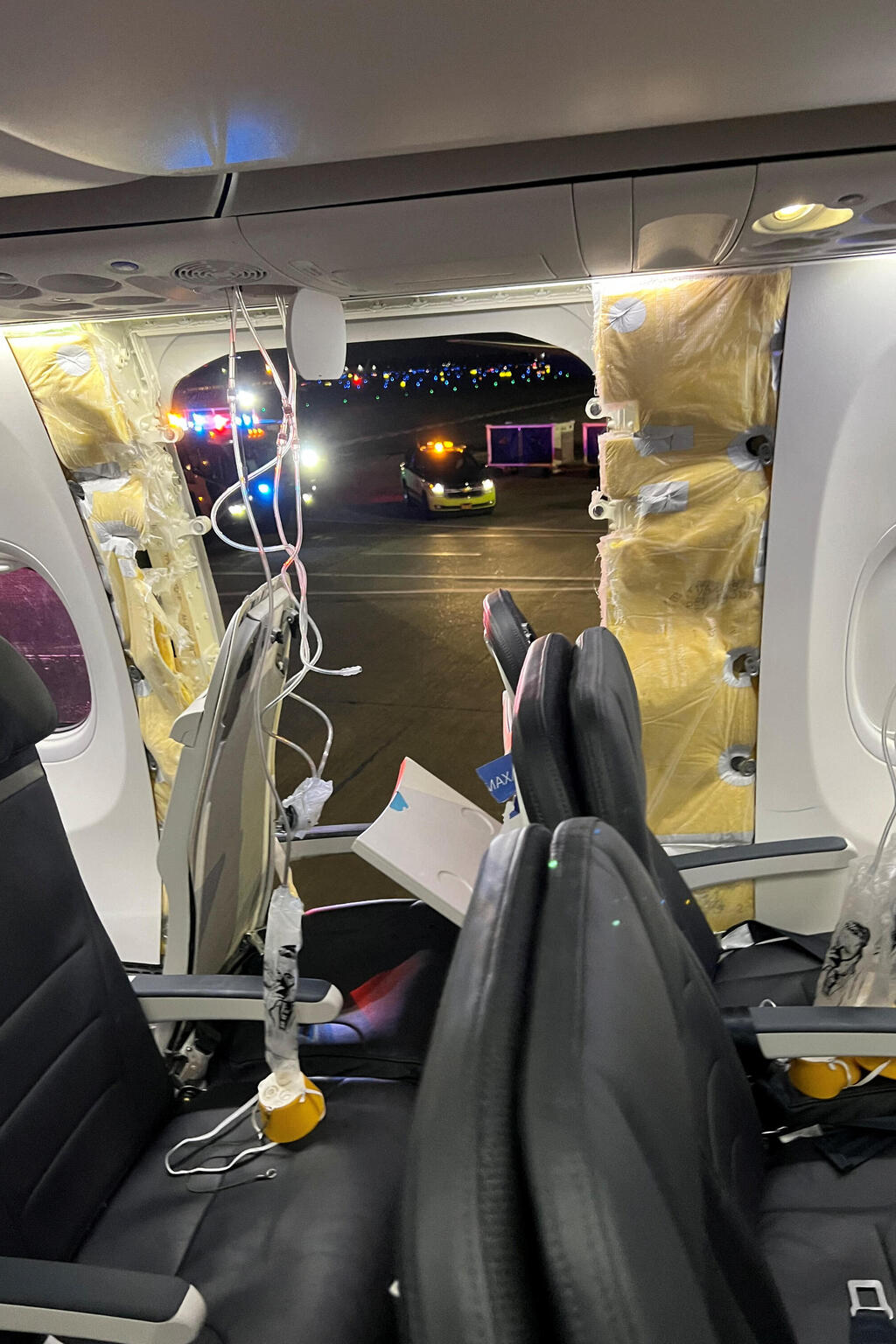Getting your Trinity Audio player ready...
The year 2023 was hailed as the most secure in the history of commercial aviation. A very positive recently released report reinforced this sentiment, indicating that an average individual would have to spend every day of over 103,000 years in the air to be involved in a fatal air accident. Still, aviation safety seems to be garnering more attention, particularly after a near-catastrophic event earlier this year when a door of a state-of-the-art Boeing 737 Max unexpectedly detached in-flight due to missing screws.
Read more:
There have been five reported aviation glitches in the last week. While no casualties resulted from these incidents, they prompted a flurry of questions in the media and aviation industry about the safety standards of top global airlines. Notably, United Airlines, an American firm, owned the aircraft involved in four of the five events.
1 View gallery


A plane with a hole where the window should be
(Photo: Instagram/@strawberrvy via REUTERS)
On March 1, an incident involving a sophisticated Boeing 737-900 plane from Alaska Airlines only came to light days later. The plane, which had departed from Los Cabos in Mexico, landed in Portland with one of its cargo doors partially open. The airline explained that the pilots were unaware of the malfunction, since they did not receive any alerts from the computer system. It remains uncertain whether the door opened in-flight or during landing. As per news reports, the cargo hold not only contained the passengers' luggage, but also a substantial number of their pets, all of whom fortunately survived the ordeal.
On March 4, a Boeing aircraft, identical in model to one that had flown from Houston toward Fort Myers carrying 167 passengers, was forced to turn back during the flight due to an engine fire. The aircraft managed a safe landing.
A separate event unfolded on March 7, featuring a United Airlines Boeing 777, which was transporting 123 passengers along with a 14-member crew. During its departure from San Francisco heading toward Osaka, Japan, the plane lost a wheel which plummeted to the ground. The dislodged wheel, weighing 120 kilograms, landed on a car, completely destroying it, and severely damaged another vehicle. Miraculously, no individuals on the ground were struck. The aircraft had to execute an emergency landing in Los Angeles, which was carried out without further incident. These events, recorded and widely circulated online, quickly became viral sensations.
Fast-forward to March 8, and an Airbus A320 was forced to perform an emergency landing while en route from San Francisco to Mexico City due to an issue with its hydraulic system. All 105 passengers were safely evacuated. These incidents have prompted the U.S. Federal Aviation Administration to initiate investigations. The aviation industry is currently under scrutiny, especially following the incident in which a window detached from an advanced Boeing plane in Alaska due to oversight in installing crucial screws for door security. This has reignited discussions around the potential safety compromises that might be a consequence of the intense competition between aviation behemoths, Boeing and Airbus, as they vie for substantial contracts and passenger traffic.
On Monday, reports from New Zealand indicated that a "technical glitch" leading to "significant turbulence" on an aircraft flying from Sydney, Australia to Auckland resulted in injuries or necessitated medical attention for 50 individuals. Despite the incident, the plane made a safe landing. However, 13 individuals, one of whom is in a critical condition, were transported to the hospital.
The incident took place on LATAM Airlines' LA800 flight. A representative of the airline commented: "The aircraft made its scheduled landing in Auckland. Several passengers and crew members were impacted by the event. They were promptly attended to and evaluated or treated by the airport's medical team." The aircraft involved in the incident was a Boeing 787-9 Dreamliner. Testimonies suggest the pilot attributed the incident to a brief system malfunction onboard the plane.


